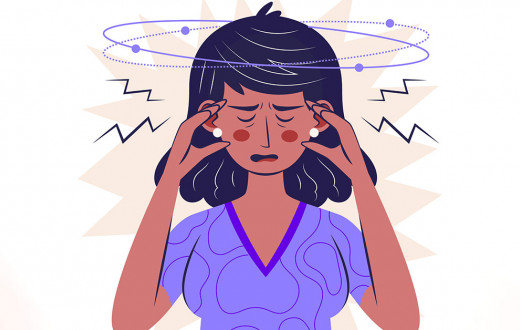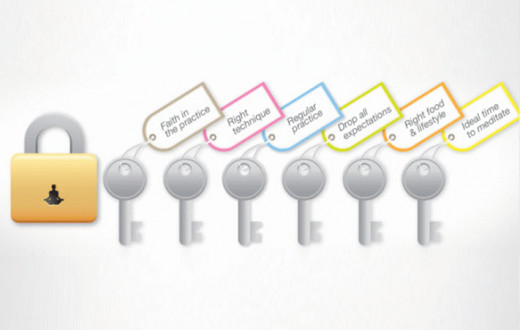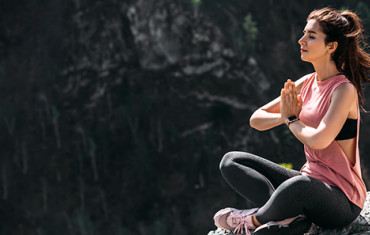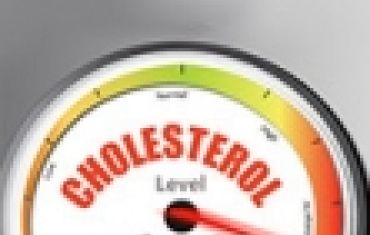Did you know that all the physical exercises, yoga, tai chi and other forms of activities you do are guided by the process of inhalation and exhalation? Even at the gym, the main focus is on the right process of breathing, which checks your exhaustion. In Yoga and the modern-day workouts, breathing right is highly emphasized because that impacts the body and the brain. That’s the reason you are advised to breathe in and breathe out when you are stressed or anxious.
What is Deep Breathing?
Deep Breathing, as the name suggests, implies being mindful of the process of breathing, holding and releasing. Breathing energizes us by exercising the lungs, taking in oxygen and releasing carbon dioxide. Stress subconsciously changes your breathing pattern, which escalates your blood pressure and sugar levels and contracts the muscles. The process of breathing through the nose that draws less air into the lungs is called shallow breathing. It decreases the blood flow to the brain and as a result, the organ functions get disrupted.

The different breathing techniques bring you stress relief and calm your mind promoting a greater sense of well-being. In the yogic sense, we call this pranayama. It involves inhalation (purak), retention (kumbak) and exhalation (rechak). The vital thing is to avoid shallow breathing. Here are a few breathing exercises and pranayama for anxiety and stress.
Tweak your lifestyle for better health
5 Efficient Breathing Exercises For Anxiety
The 4-7-8 Breathing
One of the most effective breathing exercises for anxiety is the 4-7-8 breathing.
Steps:
- Sit in a comfortable position.
- Exhale and empty your lungs.
- Inhale through your nose slowly for 4 seconds.
- Hold the breath for about 7 seconds.
- Exhale through the mouth energetically making a ‘whoosh’ sound for about 8 seconds.
- Keep repeating the cycle 4-5 times. You can alter the time based on your comfort.
Benefits
- Enables you to manage stress better.
- Improves focus.
- Works in treating asthma.
- Relaxes muscles and builds positivity.
- Reduces anxiety, migraine and depression.
Alternate Nostril Breathing or Nadi Shodhana
Steps:
- Take a comfortable seat, better if you could sit on the ground in a hip-opening pose.
- Close your right nostril with the right thumb.
- Inhale through the left nostril for a few seconds and pause.
- Now, cover your left nostril with your ring and pinkie finger.
- Exhale slowly through the right nostril.
- Pause at the end of the exhale.
- Repeat for a few more rounds. Keep your eyes closed during the entire process.
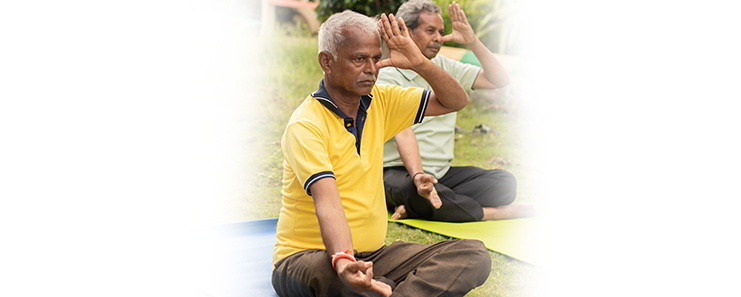
Benefits:
- Provides clarity of mind.
- Brings stress relief and calms the mind.
- Purifies blood and increases its circulation in the body.
- Reduces risk of heart diseases and cleanses nasal passages.
Abdominal Breathing
Steps:
- Sit comfortably, erect with the spine straight.
- Close your eyes and start deep breathing.
- Breathe in gently. Visualizing the air entering the abdomen brings a sense of calmness and opens up your lungs.
- Breathe out gently. As you do that, feel the air taking out toxins and stress from your body and mind.
- Ensure that you increase the time for each process and experience relaxation.
- You can try the same with one hand on the chest and one on the abdomen to be more conscious of the whole breathing process.
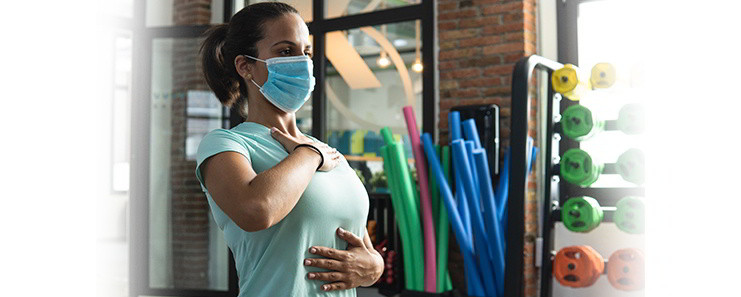
Benefits:
- The whole process of abdominal breathing exercises all the internal organs. As the air flows in and out of the lungs and the diaphragm contracts and expands, blood circulation becomes easier.
- It relaxes people suffering from autoimmune diseases like arthritis and ankylosing spondylitis.
- Controls an overactive bladder and keeps a check on gastrointestinal problems like IBS(Irritable Bowel Syndrome).
- In a nutshell, abdominal breathing brings stress relief and works towards lowering other mental conditions like postpartum depression, trauma and anxiety.
- It can boost lung capacity and help in the recovery process from Covid 19.
“When you meditate, you will start seeing a new world in front of you. You get deep rest in meditation.”
~ Gurudev Sri Sri Ravi Shankar.
Cooling Breath or Shitali Pranayama
Steps:
- Translating to “soothing and calming” exercise, Shitali helps cool the mind and body.
- Start on an empty stomach by sitting in a comfortable posture (cross-legged if on the ground).
- Roll out your tongue in an O shape and inhale through the mouth.
- If you cannot roll your tongue, try putting your tongue between the teeth and lips slightly apart as if smiling and then inhale.
- Feel the air moving from the sides of the tongue through the corners of the mouth to the inside.
- Hold your breath for a few seconds and lock your chin (Jalandhar bandha).
- Exhale through the nose and experience the coolness.
- Repeat the cycles with varying the time as favourable to you.
Benefits:
- This kind of deep breathing provides a cooling sensation and clears the body of stress, anxiety and excess heat.
- Balances stomach acidity and enhances digestion.
- Improves immunity and controls thirst and skin inflammations.
- Must not be practiced by individuals with chronic heart diseases, respiratory issues and severe constipation.
Progressive Muscle Relaxation
Steps:
- This breathing technique is very effective for the mind and the muscles.
- Lie flat on the floor and relax.
- Now inhale while contracting one muscle(start from the feet).
- Exhale and release the tension in that muscle.
- Inhale as you tense your leg muscles.
- Exhale and release the tension in the leg muscles.
- Take a few deep breaths before jumping on to the next muscle.
- Repeat the process till you relax the muscles way up to your face.
Benefits:
- It’s excellent for stress relief and relaxes each muscle driving away physical exhaustion.
- Helps against insomnia and restlessness.
- Reduces muscle tightness and anxiety.
- Lowers blood pressure and helps cope with heart diseases.
Conclusion
With so many materialistic influences and desires around, you may feel you don’t have enough time to practice deep breathing. But following these breathing techniques regularly would not just bring stress relief but also uplift your awareness and spirituality. It will take your mind off stress to a fresh beginning. It’s the best way to make use of your time and aim for a balanced lifestyle.
“Let’s not blame time; all time is good. You only have to make good use of it. What appears to be a bad time is an opportunity to do something better, move into another realm.” ~ Gurudev Sri Sri Ravi Shankar
Are you distressed? Join us here for free and get solutions to your worries.
Sudarshan Kriya is a powerful cyclic breathing technique. Over 100 independent studies conducted on four continents and published in peer-reviewed journals have demonstrated a comprehensive range of benefits of practicing Sudarshan Kriya.
One of the most effective breathing exercises for anxiety is the 4-7-8 breathing.
Steps:
Sit comfortably.
Exhale and empty your lungs.
Inhale through your nose slowly for 4 seconds.
Hold the breath for about 7 seconds.
Exhale through the mouth energetically make a ‘whoosh’ sound for about 8 seconds.
Keep repeating the cycle 4-5 times. You can alter the time based on your comfort.
Benefits:
Enables you to manage stress better.
Improves focus.
Works in treating asthma.
Relaxes muscles and builds positivity.
Reduces anxiety, migraine and depression.
1. Take your attention to slow and deep breaths. It increases your energy level
2. Listen to people with more problems than you!
3. Visit a mental hospital for a day! Listen to the patients there, and observe their lives. It will teach you a new perspective
4. Visit a crematorium or cemetery, and remember that you will also be there one day
Sleep well
5. Eat nutritious food and avoid meals that contain processed foods, refined sugars, stimulants, or chemicals
Yes, published research shows that Sudarshan Kriya, the powerful breathing technique, significantly reduces stress, depression, anxiety and Post-Traumatic Stress Disorder (PTSD), and increases the mental and physical well-being.
The different deep breathing techniques bring you stress relief and calm your mind promoting a greater sense of well-being. In the yogic sense, we call this pranayama. It involves inhalation (purak), retention (kumbak) and exhalation (rechak). The vital thing is to avoid shallow breathing. Shallow breaths disrupt organ functioning.
Sudarshan Kriya, a powerful cyclic breathing technique, increases the beta activity in the left frontal, occipital and midline regions of the brain in the practitioners.
Deep breathing slows down the heart rate, with more oxygen, giving rest to the brain.
It stimulates the gray matter density and activates the hippocampus and prefrontal cortex of the brain. Thus, it improves reasoning power.
It promotes a sense of calmness in the brain by reducing the impact of overstimulation of the frontal lobes.
It reduces five major risk factors for Alzheimer’s and dementia.
The practitioners demonstrated significantly greater EEG Beta wave activity indicating high alertness and mental focus.
The synchronization of the left and right brains stimulates thinking ability and creativity.
Breathing guided by The Art of Living faculty can help you lower anxiety. It is suggested to learn Sudarshan Kriya and other breathing techniques in the Online Meditation and Breath Workshop.
Only when you practice Sudarshan Kriya and Pranayama, take deep and long breaths as and when guided.
The breathwork in Sudarshan Kriya positively affects all organs and organ systems of the body. So the practitioners experience body, mind and breath in harmony. Physical, mental, emotional, physiological, psychological, relationship, spiritual and social benefits of Sudarshan Kriya experienced by the practitioners like students, homemakers, businessmen, professionals, soldiers, war refugees and violence victims. Hence, breathwork is powerful.



